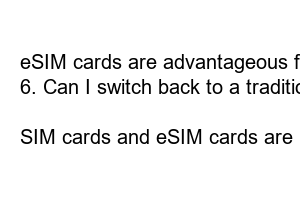유심 이심 차이
Title: SIM Card vs eSIM Card: Understanding the Difference
Introduction:
In this tech-driven era, staying connected has become an essential part of our lives. SIM cards and eSIM cards play a crucial role in facilitating seamless communication. Whether you’re using a traditional SIM card or considering the new eSIM technology, understanding their key differences will help you make an informed decision. So, let’s delve into the intricacies of these tiny yet significant communication tools.
1. What is a SIM Card?
A SIM card, short for Subscriber Identity Module, is a small chip that securely stores your mobile network credentials. It contains your unique phone number, subscriber details, and contacts. Generally, SIM cards are used in mobile devices to enable voice calls, text messaging, and internet access.
2. What is an eSIM Card?
An eSIM card, or embedded SIM, is a virtual SIM card that operates without a physical chip. Instead, it is embedded directly into your device, eliminating the need for swapping or physically inserting SIM cards. eSIM cards provide greater flexibility, allowing users to switch between different network carriers effortlessly.
3. Physical vs Virtual:
A traditional SIM card is a physical, detachable chip placed in your device’s SIM tray, while an eSIM card is pre-installed and cannot be removed or swapped physically.
4. Flexibility and Convenience:
With a standard SIM card, switching carriers or travelling internationally can be a hassle as it requires physically replacing the card. On the other hand, eSIM technology offers the convenience of changing plans or network carriers instantly, eliminating the need for a physical swap.
5. Storage Capacity:
Traditional SIM cards have limited storage capacity, typically just a few kilobytes, providing room for only a limited number of contacts and messages. In contrast, eSIM cards can hold more extensive contact lists, text messages, and even additional digital content.
6. Compatibility:
Currently, most modern smartphones and wearables are equipped with eSIM technology. However, traditional SIM cards are still widely used, ensuring compatibility with all types of mobile devices.
FAQs:
1. Can I switch from a traditional SIM card to an eSIM card?
Yes, many network carriers offer eSIM card activation. Contact your carrier to check if your device is eSIM compatible and request an eSIM activation.
2. Can I use an eSIM card on multiple devices?
No, eSIM cards are designed for single-device use. However, you can switch your eSIM between compatible devices as needed.
3. Are eSIM cards more secure than traditional SIM cards?
Both types of cards offer secure communication. However, eSIM cards provide an additional layer of security as they are harder to tamper with, being embedded within the device.
4. Can I keep my existing phone number with an eSIM card?
Yes, you can conveniently transfer your existing phone number to an eSIM card, just like you would with a physical SIM card.
5. Can eSIM cards be used internationally?
eSIM cards are advantageous for international travel as they allow you to switch network providers without needing a physical SIM card from each country you visit.
6. Can I switch back to a traditional SIM card after using an eSIM?
Yes, if you prefer using a physical SIM card, you can easily switch back to one by replacing your eSIM with a traditional SIM card.
Summary:
SIM cards and eSIM cards are both vital tools for keeping us connected in the digital age. While traditional SIM cards offer simplicity and compatibility, eSIM cards provide flexibility and convenience. Understanding their differences enables you to choose the most suitable option for your communication needs.

